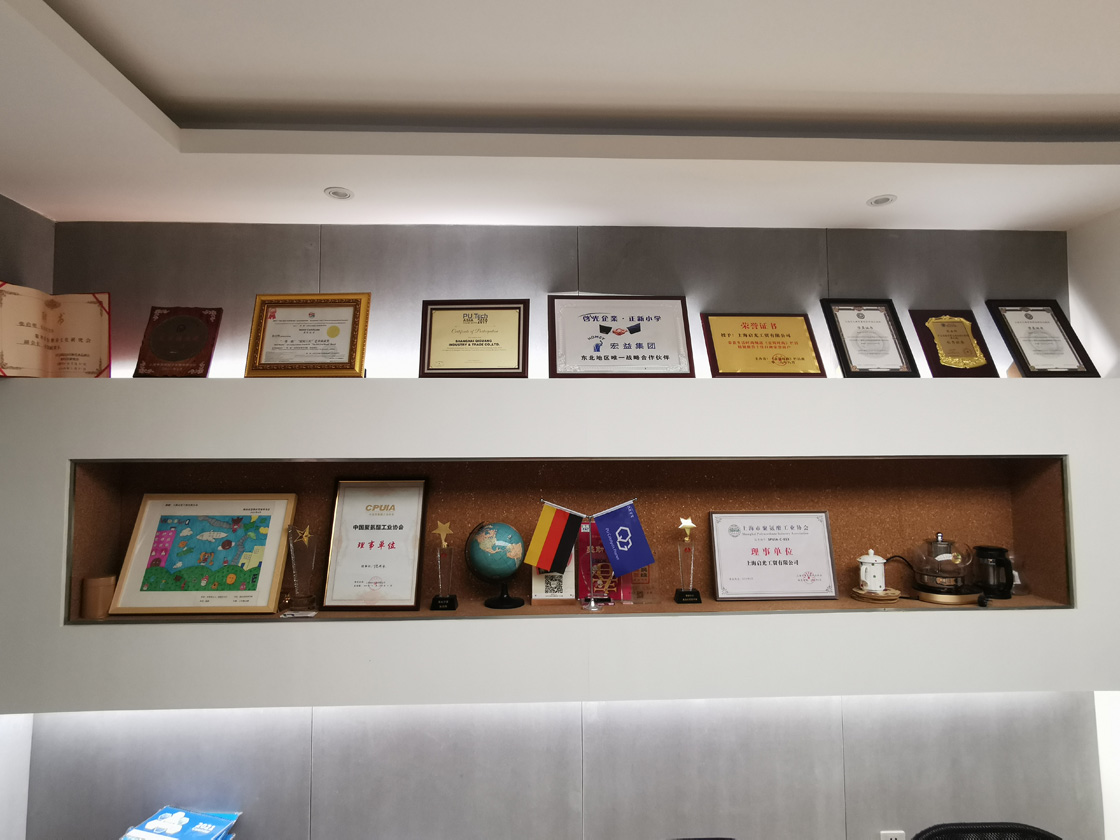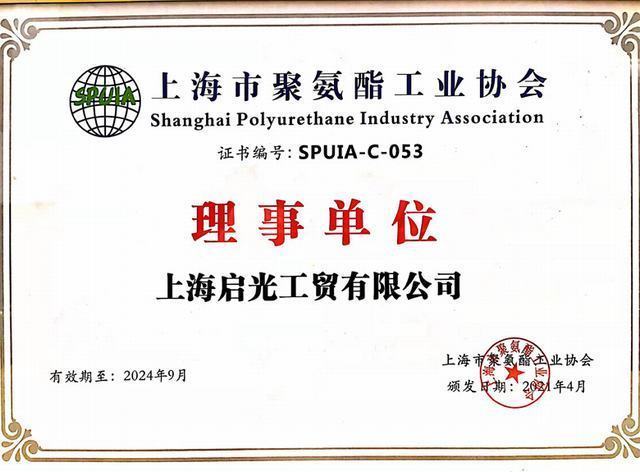Polyvinyl chloride (PVC) is extremely sensitive to heat and has poor thermal stability. It will decompose when the processing temperature is greater than 90 degrees Celsius. Therefore, an appropriate amount of heat stabilizer must be added during PVC processing to inhibit its decomposition.
Heat stabilizers mainly include lead salts, metal soaps, organic tins, composite heat stabilizers, phosphites, monohydric and polyols, epoxy and nitrogen-containing compounds. The first four categories account for Most of the heat stabilizer dosage. The high efficiency, durability, low cost, low coloration and electrical insulation of thermal stabilizers have always been the direction of research, development and production. Since the 1980s, due to the increasing awareness of environmental protection around the world, non-toxic and non-environmentally polluting heat stabilizers have become a hot topic in development.

During the thermal degradation process of PVC, almost no monomers are produced, but a large amount of HC1 is produced. The thermal degradation mechanism of PVC is very complex, and similarly, the action mechanism of heat stabilizers is also very complex. Based on the current research results, the functions of heat stabilizers can be summarized as preventive (neutralizing HC1, replacing unstable chlorine atoms and preventing auto-oxidation) and remedial (reacting with unsaturated parts in PVC to destroy carbocations). kind. The details are as follows:
(1) Neutralize HCL released from PVC to inhibit its autocatalysis. For example, lead salts, organic acid metal soaps, organic tin compounds, epoxy compounds, amines, metal alkoxides, phenates and metal thiolates, etc., can react with HC1 and inhibit the de-HC1 reaction of PVC.
Me(RCOO)2+2HCI→Me C12 +2RCOOH
(2) Replace or eliminate unstable factors such as allyl chlorine atoms or tertiary carbon chlorine atoms in PVC molecules to eliminate the initiation point of deHCI. For example, the tin atom of the organotin stabilizer is coordinated with the unstable chlorine atom of the PVC molecule. At the same time, the sulfur atom in the organotin is complexed with the corresponding carbon atom in the PVC. The sulfur atom in the ligand is complexed with the unstable chlorine atom. Displacement occurs. When HC1 is present, the coordination bond is split, and the sulfhydryl group is firmly combined with the carbon atom in the PVC molecule, thereby inhibiting the further reaction of removing HCI to form a double bond. Among metal soaps, the substitution reaction of zinc soap and cadmium soap with unstable chlorine atoms is the fastest, barium soap is the slowest, calcium soap is slower, and lead soap is in the middle. At the same time, the generated metal chlorides have varying degrees of catalytic effects on dehydrochlorination, and their strengths and weaknesses are as follows
ZnCl2> CdCl2>> BaCl2, CaCl2 > R2SnCl2
(3) Addition with double bonds and conjugated double bonds prevents the development of polyene structures and reduces coloring. The salt or complex of unsaturated acid has a double bond, and a diene addition reaction occurs with the conjugated double bond in the PVC molecule.
Thereby destroying its conjugated structure and inhibiting discoloration. In addition, when metallic soap replaces allyl chloride, it is accompanied by double bond transfer, which destroys the polyene structure and inhibits discoloration.
(4) Capture free radicals and prevent auto-oxidation. For example, adding phenolic heat stabilizers can block HCL removal because the hydrogen atom free radicals given by phenol can couple with the degraded PVC macromolecule free radicals to form substances that cannot react with oxygen and have a thermal stabilizing effect. This heat stabilizer can have one or several functions.
There is a synergistic effect between different heat stabilizers. The domestic and foreign medical circles generally believe that this is the case with calcium-zinc compound stabilizers that are safe and non-toxic. The U.S. Health Administration and the Japanese Health Bureau consider calcium-zinc complex series stabilizers to be non-toxic additives for plastic products. It is foreseeable that calcium-zinc composite stabilizers will eventually build the future non-toxic PVC stabilizer system in various countries
The reaction between zinc carboxylate and allyl chloride in polyvinyl chloride is the main reaction for the stabilizing effect of calcium-zinc composite stabilizer. The presence of calcium carboxylate regenerates the harmful ZnCl2 generated by the reaction between zinc soap and the unstable chlorine atoms of PVC into Zinc soap, thus on the one hand, activates the zinc soap, on the other hand, it greatly reduces its catalytic ability, and transforms itself into harmless calcium chloride, thus inhibiting the destructive effect of ZnCl2. The principle is shown in Figure 11-1

The rapid development of the PVC industry has greatly promoted the development and progress of heat stabilizers. The development and development of heat stabilizers has taken on a new dimension and continues to move towards low-toxicity and non-toxic methods.Organic compounds of dioctyltin, among which dioctyltin compounds are used as non-toxic stabilizers in more countries. Organotin is mainly used to stabilize rigid PVC products, especially those products that require excellent transparency and thermal stability. Of course, it can also stabilize soft products, but because it is more expensive, it is generally not used.
1. Dibutyltin dilaurate
This is a light yellow clear liquid, soluble in all industrial plasticizers and solvents, and is toxic. It is the oldest variety of organotin and has excellent lubricity, transparency and weather resistance. It is resistant to sulfur pollution but has poor heat resistance. It is used as the main stabilizer for soft transparent products and as a lubricant for hard transparent products.
2. Dibutyltin maleate
This is a white amorphous powder. The melting point and volatility vary with the degree of polymerization, ranging from about 100 to 140°C. This product is toxic and tear-inducing. Mainly used for rigid transparent products requiring high softening point and high impact strength. Because it has no lubricating effect, it is often used together with dibutyltin dilaurate, with a dosage of 0.5-2 parts.
3. Bis(monobutyl maleate)dibutyltin
Light yellow transparent liquid, non-toxic (the allowed dosage is less than 3 parts). This product has good weather resistance, transparency, coloration prevention and thermal stability, and does not cause sulfur pollution. It is often used in PVC transparent hard products, and the dosage is 2.0-4.0 parts.
4. Bis(isobutyl thioglycolate) di-n-octyltin
This is a light yellow liquid, insoluble in water, easily soluble in esters, ethers, alcohols, aliphatic and aromatic hydrocarbons, chlorinated hydrocarbons and the main types of plasticizers. It is the main variety of tin mercaptide and one of the most commonly used non-toxic organotin stabilizers. It is used for rigid transparent PVC (2-3 parts) and soft transparent PVC (1 part). Its disadvantages are poor weather resistance, odor, sulfur pollution, and no lubrication. In addition, because it contains ester groups, it has a certain plasticizing effect.
5. Di-n-octyltin dilaurate
This is a yellow liquid with a specific gravity of 1.01-1.02 at 25°C, a refractive index of 1.46-1.47, and a viscosity below 60 centipoise at 30°C. This product is non-toxic and has good lubricity. It is mainly used in rigid transparent PVC food packaging materials. The dosage is less than 1.5 parts.
6. Di-n-octyltin maleate ’
This is a white powder with a melting point of 87-105°C. It is insoluble in water and soluble in benzene, ethanol and acetone. This product is non-toxic and has excellent long-term heat resistance. It is mainly used as a secondary stabilizer for tin mercaptide. The dosage is usually 0.3-0.5 parts.
(5) Secondary heat stabilizer
l. Epoxy compounds
Epoxy compounds such as epoxy soybean oil, epoxy linseed oil, epoxy tall oil, epoxy butyl stearate, octyl ester and other epoxy compounds are commonly used secondary heat stabilizers for polyvinyl chloride. They are related to the above The main stabilizer has a high synergistic effect when used together. It has the advantages of light stability and non-toxicity. It is suitable for soft FVC products, especially soft FVC products that are exposed to sunlight. It is usually not used for rigid PVC products.
2. Phosphite
Diphenyl-decyl phosphite and diphenyl-decyl phosphite are also secondary heat stabilizers of polyvinyl chloride. Especially when used in stabilizer systems containing barium/cadmium and calcium/zinc, they can improve the transparency of products. However, it will hydrolyze, so it cannot be used as a secondary stabilizer in PVC products that must be in contact with water.
3. Other organic compounds
Diphenylthiourea, 2-phenylindole, β-line crotonates, trimethylolpropane, thiolauric anhydride, and high-boiling polyols such as pentaerythritol, sorbitol, and mannitol Alcohol, etc. can also play a synergistic effect when used together with the main heat stabilizer.
Evaluation on the discoloration of various heat stabilizers upon heating
The ideal heat stabilizer should have the functions of absorbing HCL, eliminating active sites, adding to conjugated polyene chains, destroying carbocation salts, preventing auto-oxidation, etc., without producing any catalytic effect on PVC degradation. product. Actual heat stabilizers show different heat stabilization properties due to their different functions, and can be roughly divided into four categories: initial type, long-term type, intermediate type and all-round type.
1) Cadmium and zinc soap are typical early-stage heat stabilizers, which can quickly absorb HCL and effectively replace unstable chlorine atoms on the PVC chain with carboxylate groups under the catalysis of Cd and Zn, thereby effectively inhibiting the initial stage of heat stabilizers. Degradation and coloring, but because of its rapid consumption, the conversion products CdC12 and ZnC12 are also efficient catalysts for removing HCL from PVC, which can cause malignant degradation of PVC and cause the material to suddenly turn black, so the long-term thermal stability is poor.
2) Barium and calcium soaps are typical long-term heat stabilizers. They only have the function of absorbing HCL, so they cannot effectively inhibit the coloring of PVC. However, because the conversion products BaC12 and CaC12 have no catalytic activity, they will not cause PVC to suddenly turn black. Long-term thermal stability is good.
3) Fatty acid organotin is an intermediate type, which can not only absorb HCL, but also effectively replace unstable chlorine atoms on the PVC chain with carboxylate groups, and the conversion product has no catalytic activity.
4) Organotin mercaptans have all-purpose characteristics and can stabilize PVC through various mechanisms at the same time. The conversion products have no catalytic activity, so they have excellent initial and long-term thermal stabilization effects.